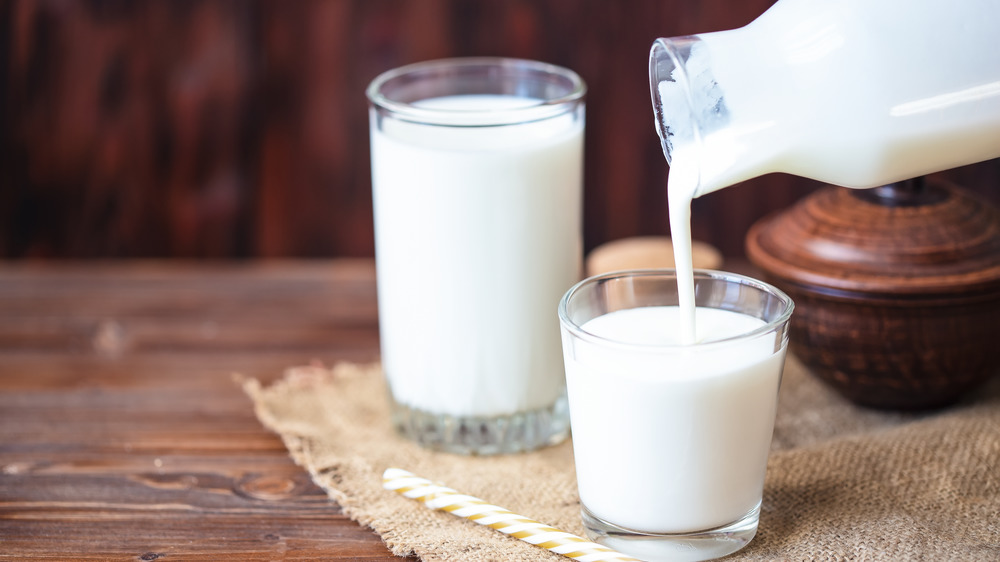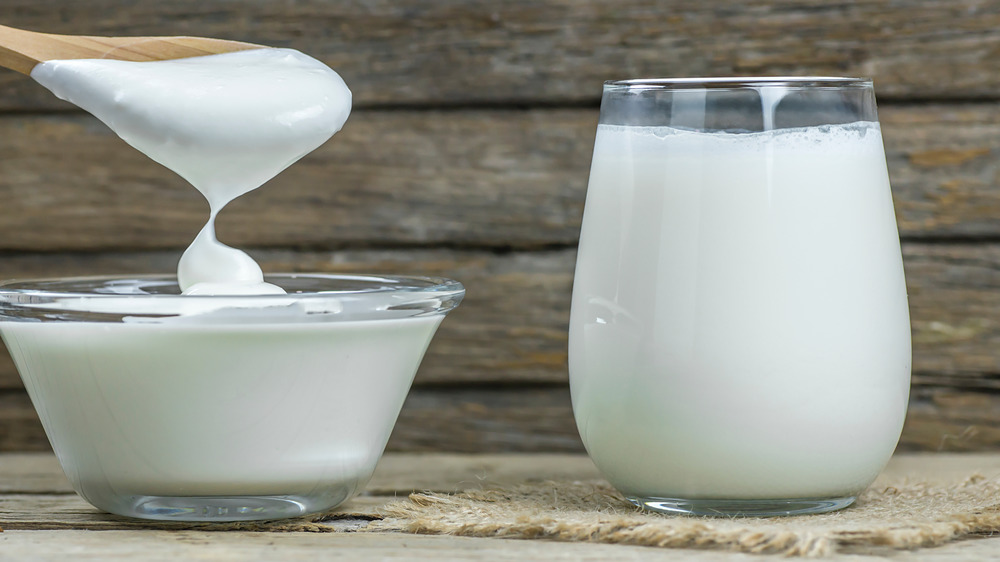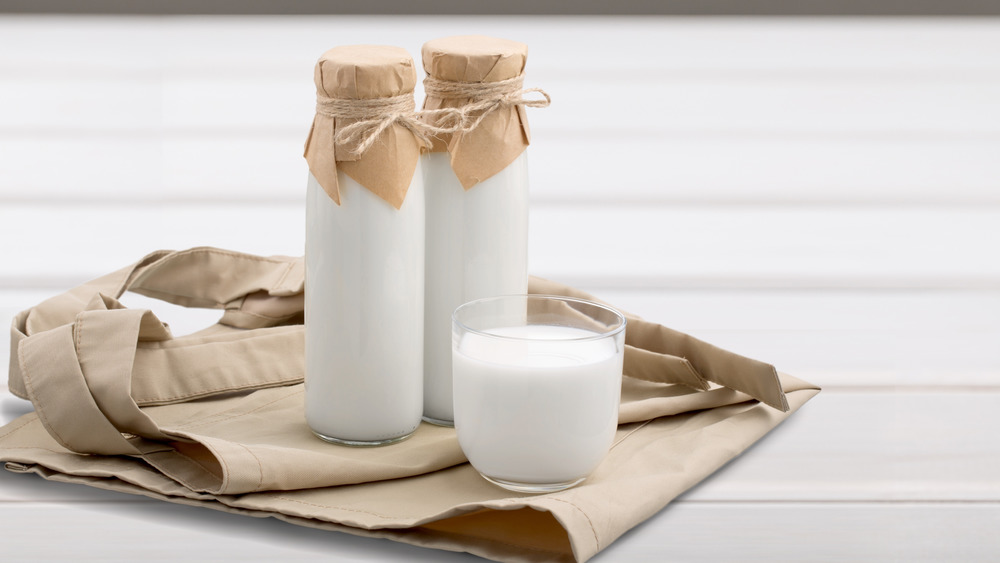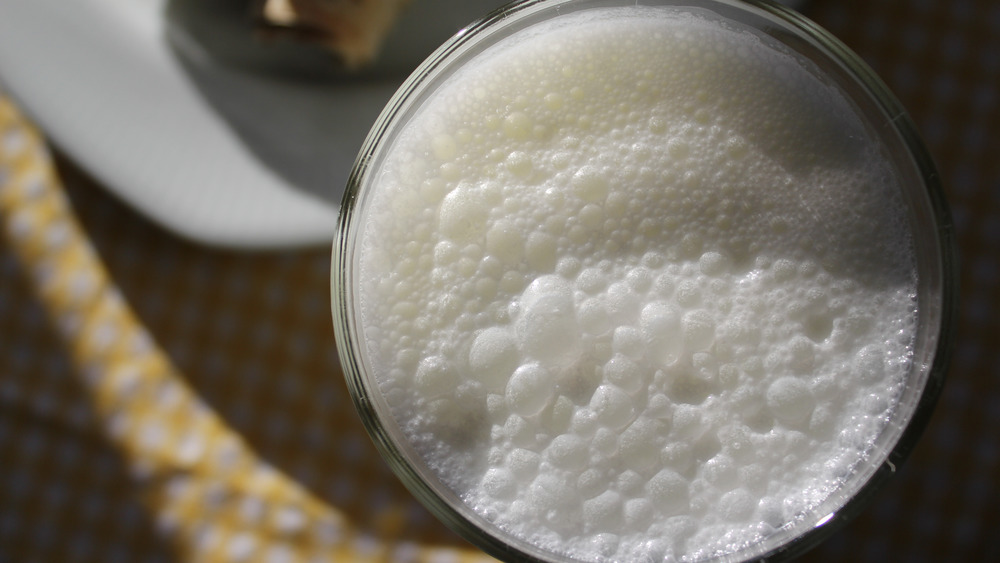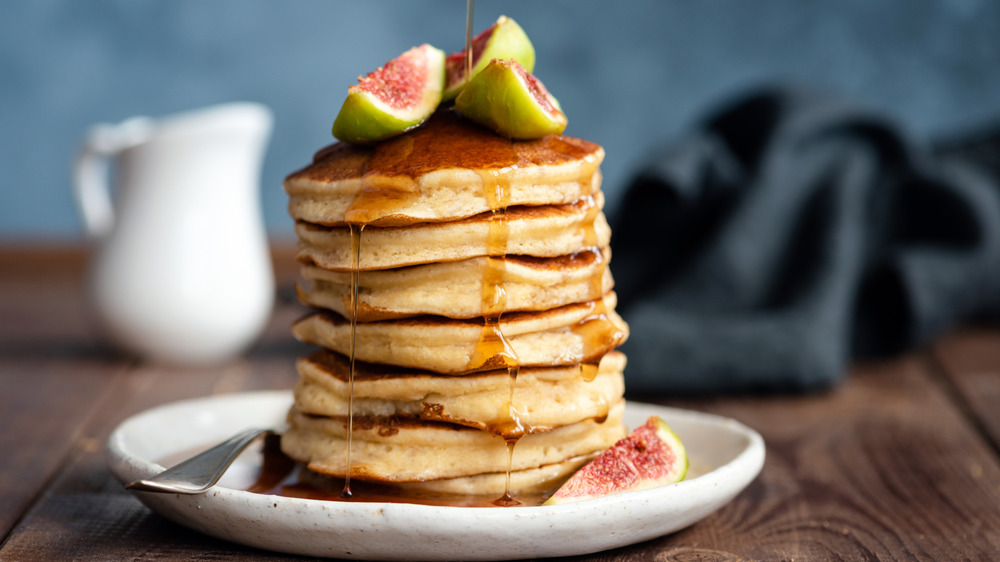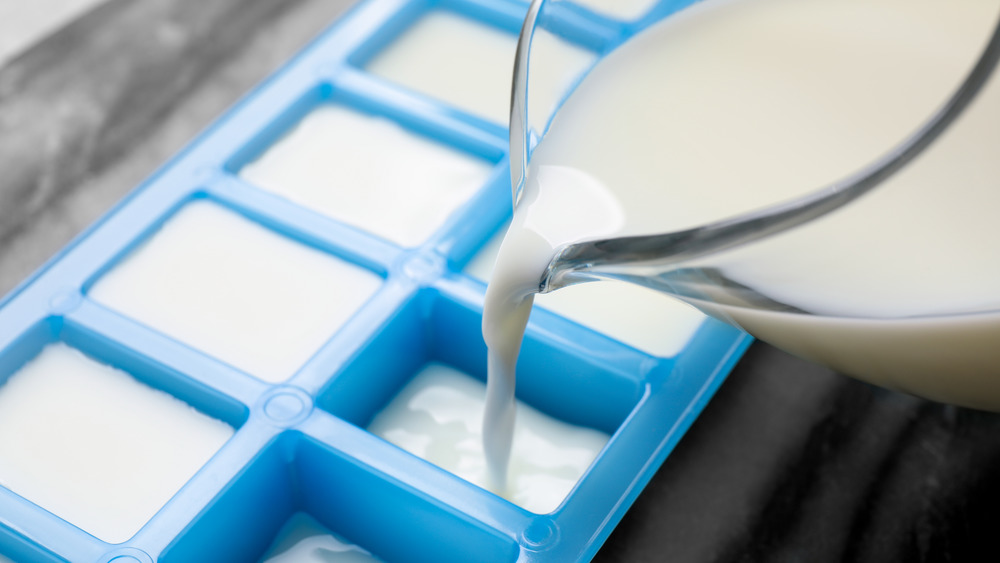The Untold Truth Of Buttermilk
There are certain foods and ingredients that have become staples in homes all around the world. Thanks to the events like the Silk Road, folks were able to pass along spices like salt, pepper, and cinnamon (per Silk Road Spices and Ducksters), as well as trade new ideas and thoughts. When the world expanded even more during colonial times, even more ingredients started to pop up. Things like corn, pumpkin, and barley were now available to the world, according to So Yummy.
With all this new interconnectivity, practices like the art of making butter were now spread on a global scale. Milky Day reports that remnants of wooden butter buckets were found that trace back to about 400 BC. Knowing this, one could take an educated guess that butter byproducts like buttermilk are also pretty old. According to NPR, people can thank Neolithic folks for all the extensive dairy experimentation that many enjoy today — buttermilk included.
For the most part, buttermilk sort of tastes like yogurt
While many have consumed buttermilk in the form of buttermilk pancakes, biscuits, mashed potatoes, and soup (per MyRecipes), many have not actually drank buttermilk straight from the proverbial bottle. The Spruce Eats notes that taste of buttermilk is similar to the tanginess that you can find in yogurt. The texture is said to be thicker than that of regular milk, but is much lighter than heavy whipping cream. But, Slate reports that today's definition of buttermilk is somewhat different to that of generations past.
The publication cites that before the 1900s, there were about three distinct versions of the this milky beverage: There was "regular old milk that had gone sour; the sour byproduct of churning sour milk or cream into butter; and the "sweet" byproduct of churning fresh milk or cream into butter." Slate states that it wasn't until after the 20th century that the version that people can find in their local milk aisle was created thanks largely to the advancement of dairy technology over the years.
Buttermilk was thought to have medicinal properties
Due to all the technological advancements that buttermilk underwent during the 20th century, the OG buttermilk now became "cultured buttermilk" (the same way other dairy products did as well). Now it was easier to acquire, and the product eventually joined the ranks of granola and olive oil, becoming part of the "health-food diet craze" in the 1920s, per Slate.
According to the publication, Russian biologist Elie Metchnikoff believed that drinking soured milk could extend the human life. Another vote of confidence buttermilk received came from none other than doctor John Harvey Kellogg (he reportedly invented corn flakes, per Britannica) who served buttermilk to the patients of his sanitarium under the moniker "Bulgarian buttermilk."
Buttermilk may not be a cure-all, but it still has some benefits. In an article from The Spruce Eats, it says today's version of buttermilk carries about 2.2 grams of fat and is high in things like potassium, vitamin B12, calcium, phosphorous, and riboflavin. Buttermilk is also said to be a great aid for the digestive system.
The original version of buttermilk is easy to make at home
There are two ways of getting this delicious and slightly creamy beverage for consumption. You can either pick it up already made at your local grocer (which will be cultured), or you can venture off like a pioneer and make it for yourself at home. The buttermilk you make at home will differ from its store-bought brethren as it is said to be much sweeter due to the churning process, per The Spruce Eats.
According to Slate, to make it at home all you would need is a carton of heavy whipping cream and a stand mixer. After the heavy cream has been briskly and intensely whisked for about 20 minutes, the end result will be a combination of both butter and buttermilk. So, how can you distinguish the two?
Slate cites that you will have some yellow and lumpy goodness in the form of butter at the bottom, while the buttermilk liquid (which is a non-fat liquid, per Southern Living) will be hovering right at the top. But don't be surprised if you find some few straggler fat bubbles in the liquid, those are just small spots that didn't make it into the butter, according to The Spruce Eats.
Store-bought buttermilk is better for cooking
Despite the ease with which homemade buttermilk is made, the store-bought counterpart is still much better for cooking. The Spruce Eats notes that because commercial buttermilk is fermented, the end product is much more helpful (and delicious) when it comes to things like baking. According to California Dairy, when combined with baking soda, buttermilk can help add extra lightness, moisture, and flavor to things like cakes, brownies, and biscuits. The report also cites how the acid that is found in buttermilk (lactic acid, per The Spruce Eats) works well in meat and poultry marinades as it can act as a tenderizer.
Buttermilk can work as a great substitute for things like yogurt or mayonnaise in soup and sauce recipes, too (via California Dairy). But, like many other dairy products, buttermilk can curdle if it is cooked at too rapid a rate. The best way to cook with buttermilk is to warm it in a separate pan slowly and then add it to whatever dish you are making (via The Spruce Eats).
Buttermilk lasts longer than regular dairy products
Another positive about buttermilk is that it keeps for much longer than your regular run-of-the-mill dairy products. According to Jessica Hits The Road, buttermilk can keep in your fridge for up to three weeks. Southern Living details that after some time, buttermilk will slightly separate, but this can be fixed with a simple shake of the bottle or carton.
But if you're planning on really extending its use, it might be better for you to freeze your buttermilk. The publication cites that buttermilk freezes really well, and recommends freezing it in ice cube trays for later use. Jessica Hits The Road explains that the best way to defrost the frozen buttermilk is by microwaving them in a heat-safe dish on a low level (so that it doesn't overcook or overheat). The semi-heated result will be separated, but the blog suggests sticking it in a blender or food processor to bring all the buttermilk's properties back together.
